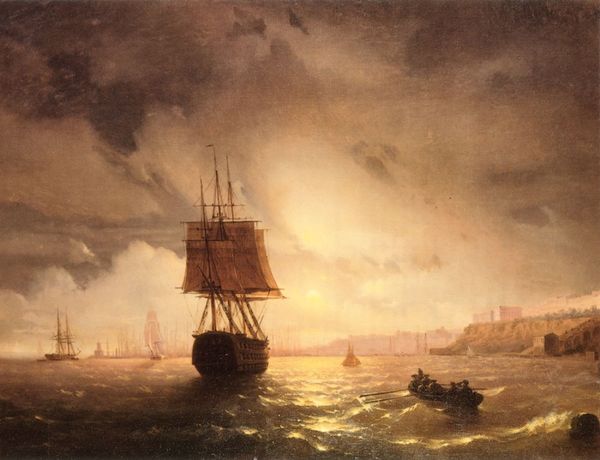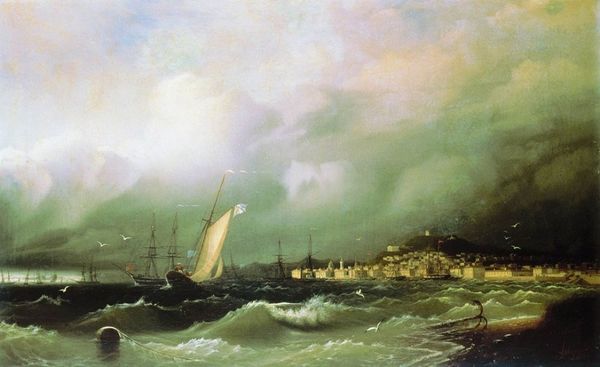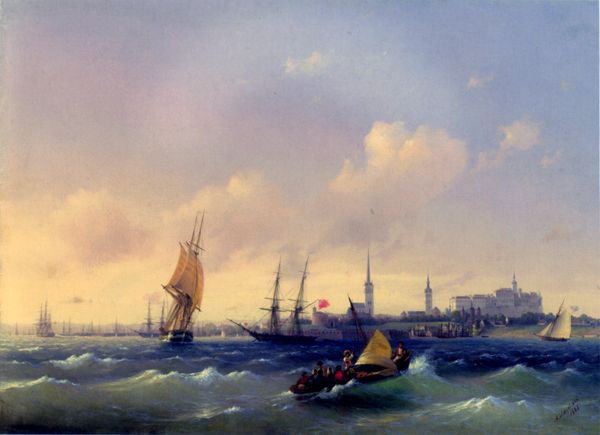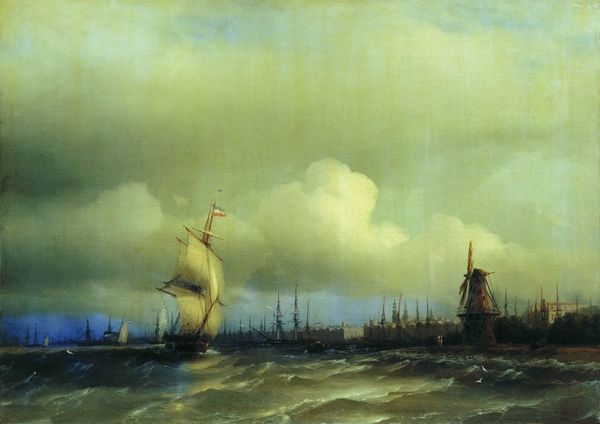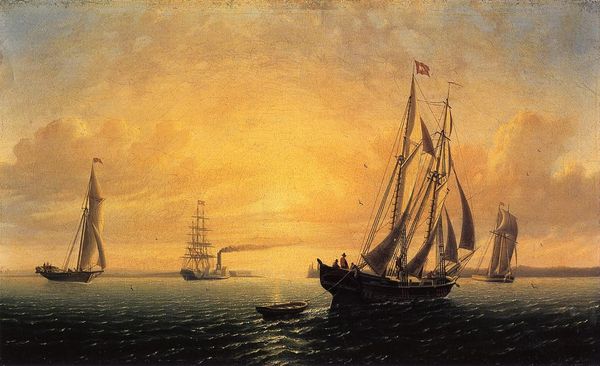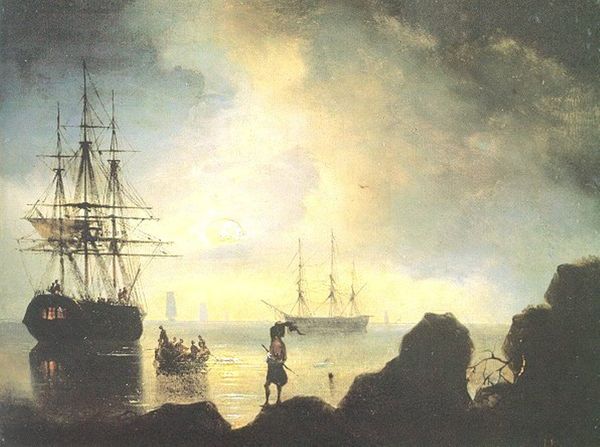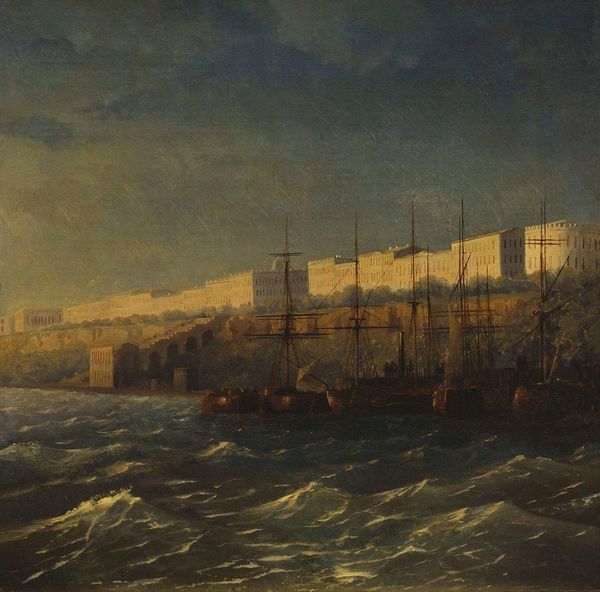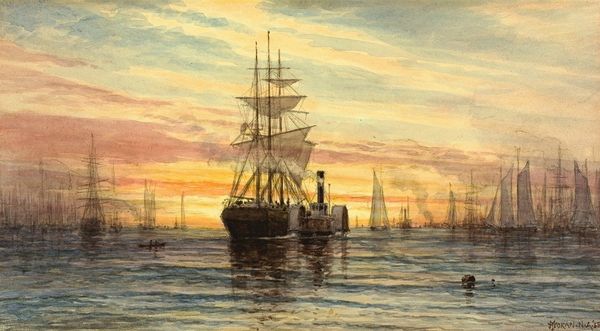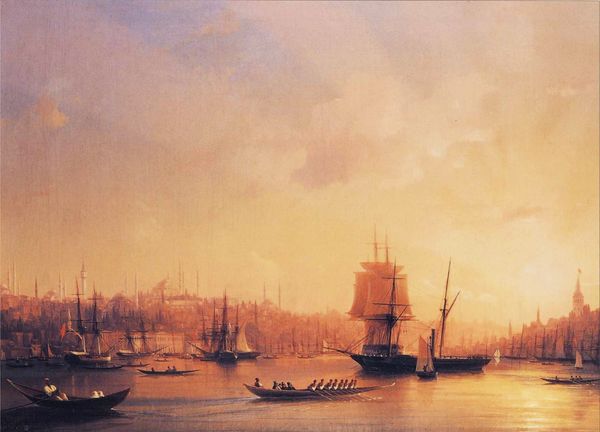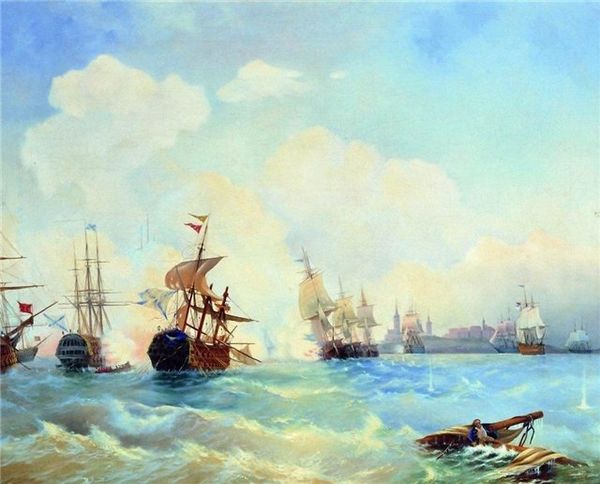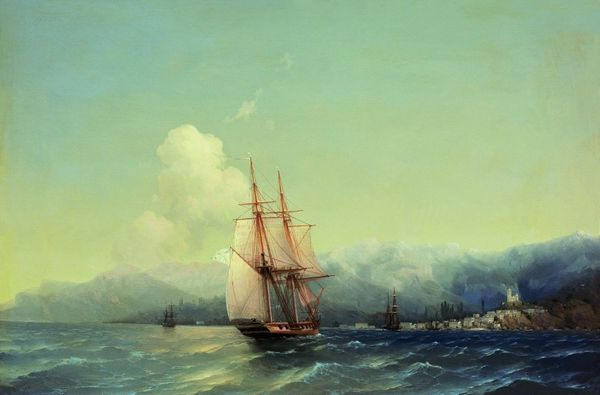
painting, oil-paint
#
sky
#
painting
#
oil-paint
#
landscape
#
oil painting
#
romanticism
Copyright: Public domain
Curator: "Odessa at Night" painted in 1846 by Ivan Aivazovsky. Oil paint was clearly his favored material to conjure this image. Editor: It certainly gives the harbor a luminous quality, the sun reflecting on the water is gorgeous. What are your initial impressions of this artwork? Curator: Immediately, I think about the production of pigment. Ultramarine, for example, would have been costly, made from lapis lazuli, impacting the cost and possibly commission of this work. Did Aivazovsky mix his own paints? Where did he source his canvas, and what was the cost of this support relative to the scene it depicts? Consider the materiality of the "sunset" he has portrayed here -- How were these colours conceived and sourced, and how are they being marketed through him and consumed by viewers? Editor: That's interesting. I hadn’t considered the pigment as a commodity itself. How does the context of material and making influence how we perceive the painting's romanticism? Curator: The sublime light, often connected to Romanticism, becomes a display not just of nature but also of material resources, labor, and even trade. The ship becomes a signifier of commerce and human interventions upon natural resources. So, whose labour exactly is romanticized here? Editor: So, by considering the material components, you're suggesting that the artwork prompts questions about economy and labour rather than simple admiration of nature's beauty? Curator: Precisely. And furthermore, to whom were the means to consume images of beauty and commerce available at the time, and in what format might Aivazovsky's work have been reproduced and circulated for mass consumption? Editor: This reframes my perspective entirely! I appreciate your insight on the complex material context and labour relations underlying the artwork’s Romantic aesthetic. Curator: Glad to help. It’s always crucial to examine the means through which we consume art and imagery, and by whom the art is made, used, and seen.
Comments
No comments
Be the first to comment and join the conversation on the ultimate creative platform.
